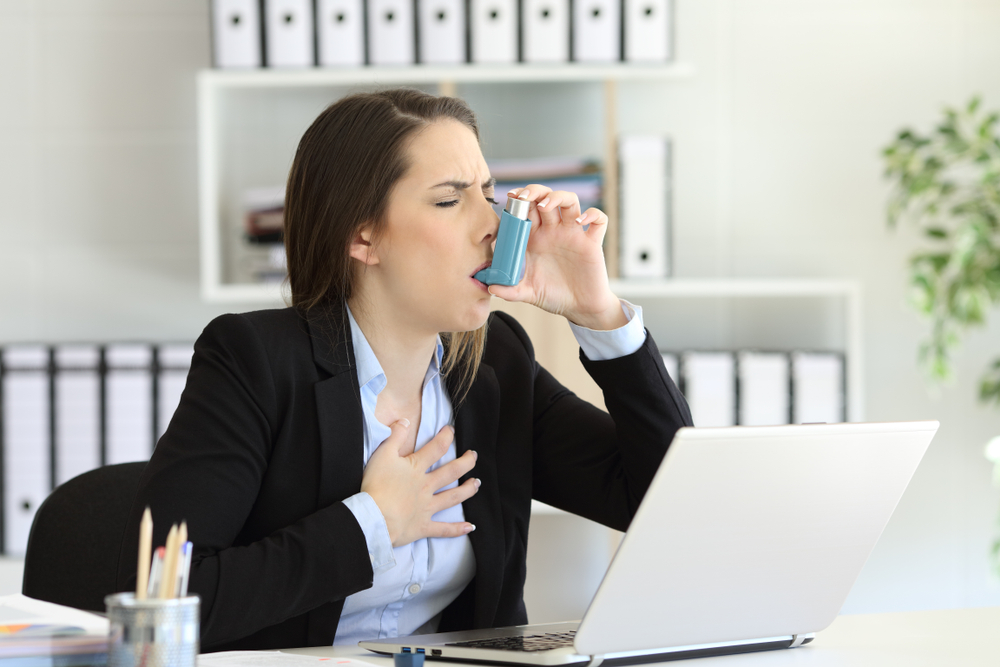Asthma management for children & teens

Asthma is a common condition caused by narrowing of the small air passages in the lungs. The narrowing happens when air passages become swollen and inflamed, causing an increase in mucus production. In addition, the muscle bands around the air passages become tighter. These changes make it harder for air to get in and out of the lungs (especially out), and cause wheezing, coughing and problems with breathing.
Wheezing is very common in babies and toddlers, but not all children with wheeze go on to develop asthma. About one in five children will be diagnosed with asthma sometime during childhood.
With the right treatment, nearly all children and teenagers with asthma will be able to join in sport and lead active lives. Children and teens with asthma should have an Asthma Action Plan that will tell you how to prevent asthma episodes (sometimes called asthma attacks) and how to manage asthma episodes when they happen.
Asthma can be unpredictable and affects each child differently. Many children will grow out of their asthma once they reach adulthood.
Treatment – Asthma Action Plans
Your child or teenager’s Asthma Action Plan should be kept in a place where you can find it easily. Make sure anyone caring for your child knows your child has asthma and understands what to do during an asthma episode.
Prevention is the most important part of treatment. Avoid triggers that commonly result in an asthma episode and keep other conditions like hay fever and eczema under control.
The two types of medication most often used by children with asthma are relievers and preventers. In some more serious cases, controllers may be required.
Asthma medication: relievers and preventers/controllers
Asthma medications can be divided into:
- relievers, which treat asthma symptoms
- preventers/controllers, which prevent asthma symptoms.
Relievers
Short-acting beta-2 agonists like salbutamol (Ventolin®, Asmol®) and terbutaline (Bricanyl®) are the drugs most commonly used to treat asthma symptoms. These drugs help to relax the narrowed airway passages and make it easier for air to get through. If your child is having a severe asthma attack, your child might be given corticosteroids (prednisolone) to reduce inflammation and swelling in the airway passages.
Preventers
Drugs to prevent asthma symptoms are very important. They can reduce inflammation in the airway passages, relax the airway muscles for prolonged periods of time, or target the underlying factors that cause inflammation and allergies.
Asthma preventers include:
- inhaled corticosteroids like beclomethasone (Qvar®), budesonide (Pulmicort®), fluticasone (Flixotide®) and ciclesonide (Alvesco®)
- corticosteroid tablets or mixtures (prednisolone), which children take by mouth
- sodium cromoglycate (Intal®), which children can inhale and is an alternative to corticosteroids
- montelukast (Singulair®), which is a tablet and another alternative to corticosteroids
- combination inhalers, which combine inhaled corticosteroid and long-acting beta-2 agonists like fluticasone and salmeterol (Seretide®), budesonide and formoterol (Symbicort®), and flucticasone and vilanterol (Breo Ellipta®)
- biologics like omalizumab and mepolizumab (Xolair® and Nucala®), which are given by injection every 2-4 weeks, and are used for severe asthma not controlled by other preventers.
If you have any questions or concerns at all, book an appointment with one of the GPs at Junction Road Family Practice to discuss the treatment and management of asthma for your child or teenager. Call the Clayfield medical practice on 07 3857 2799, or visit us online here to make an appointment.
